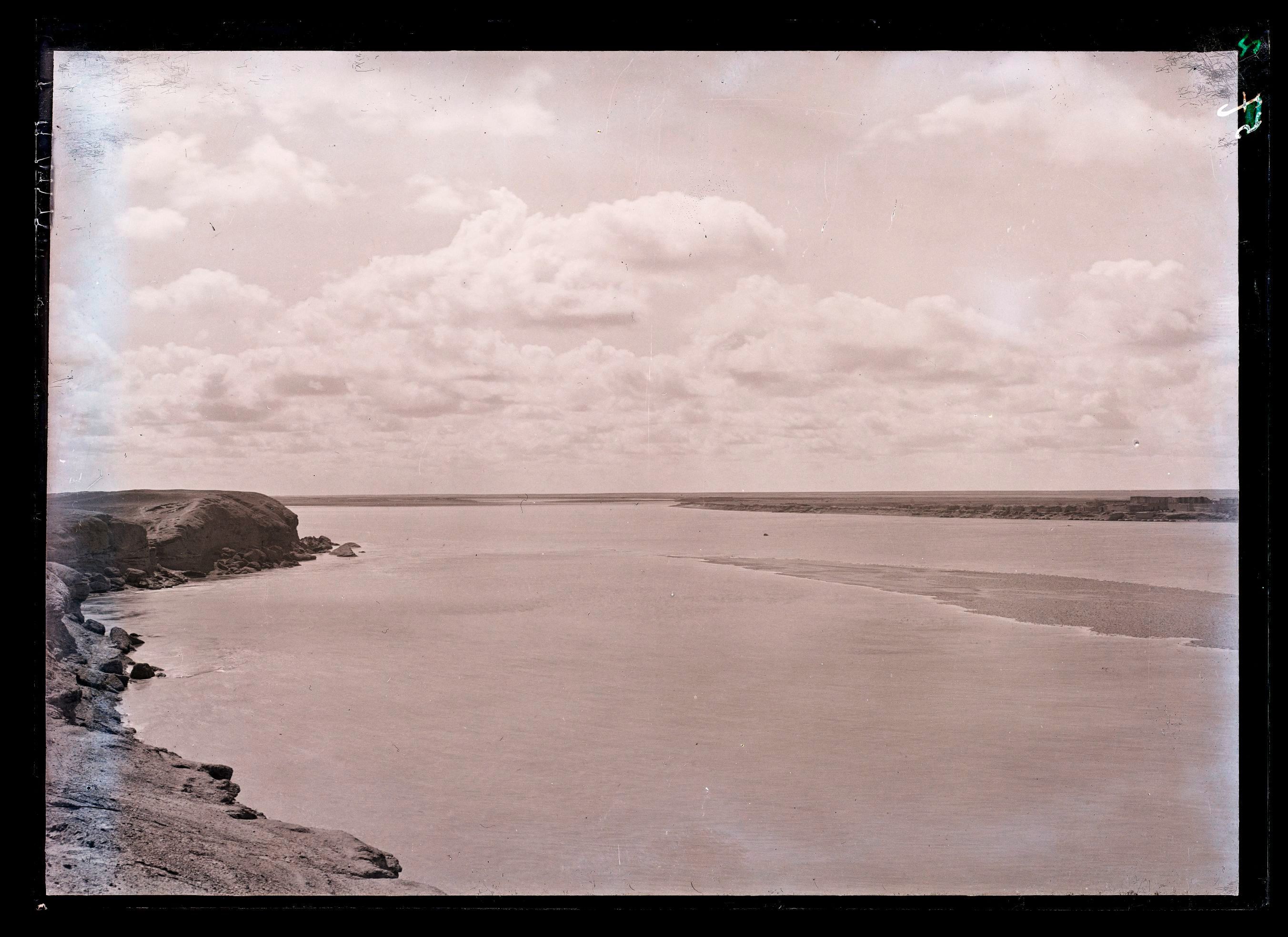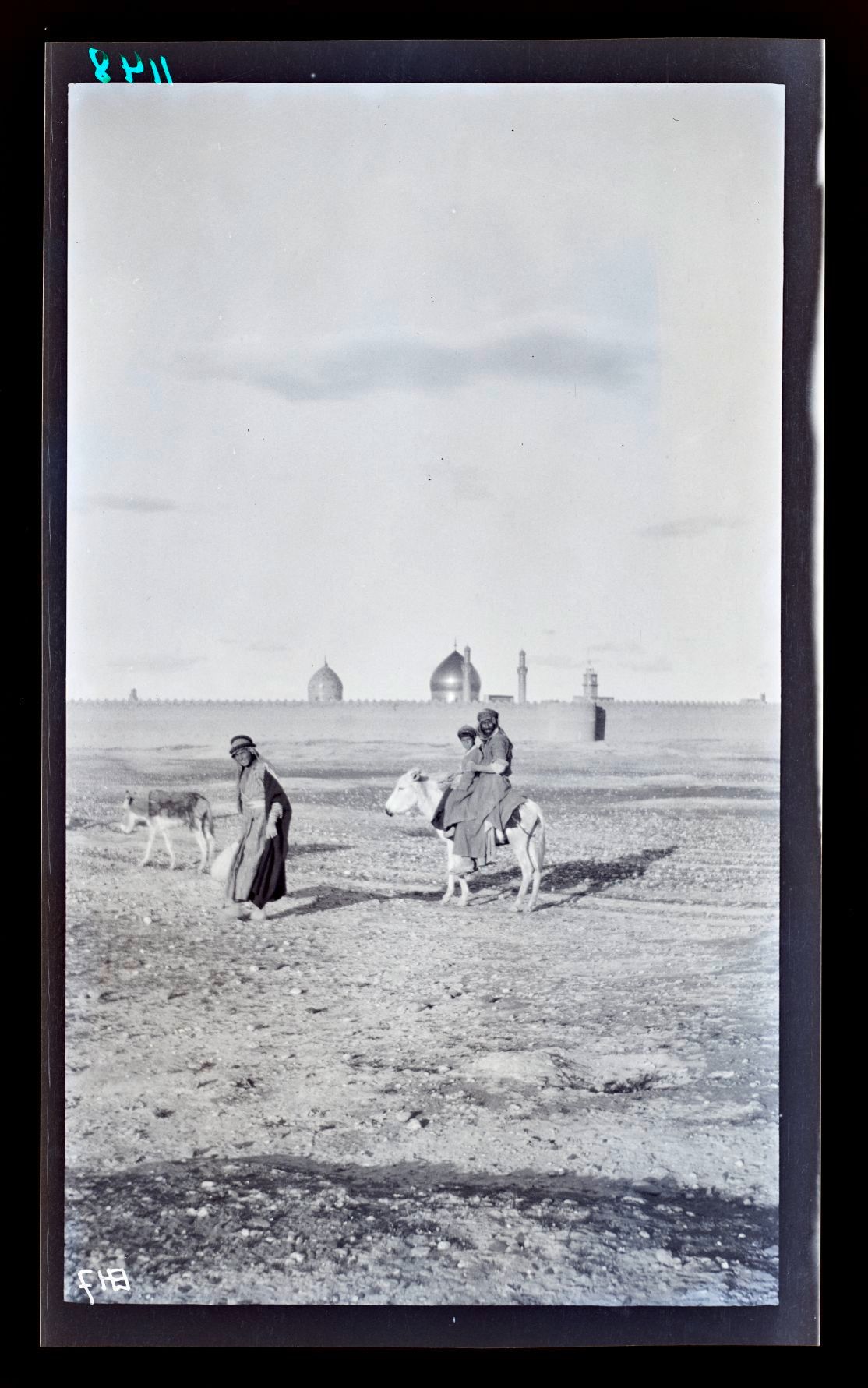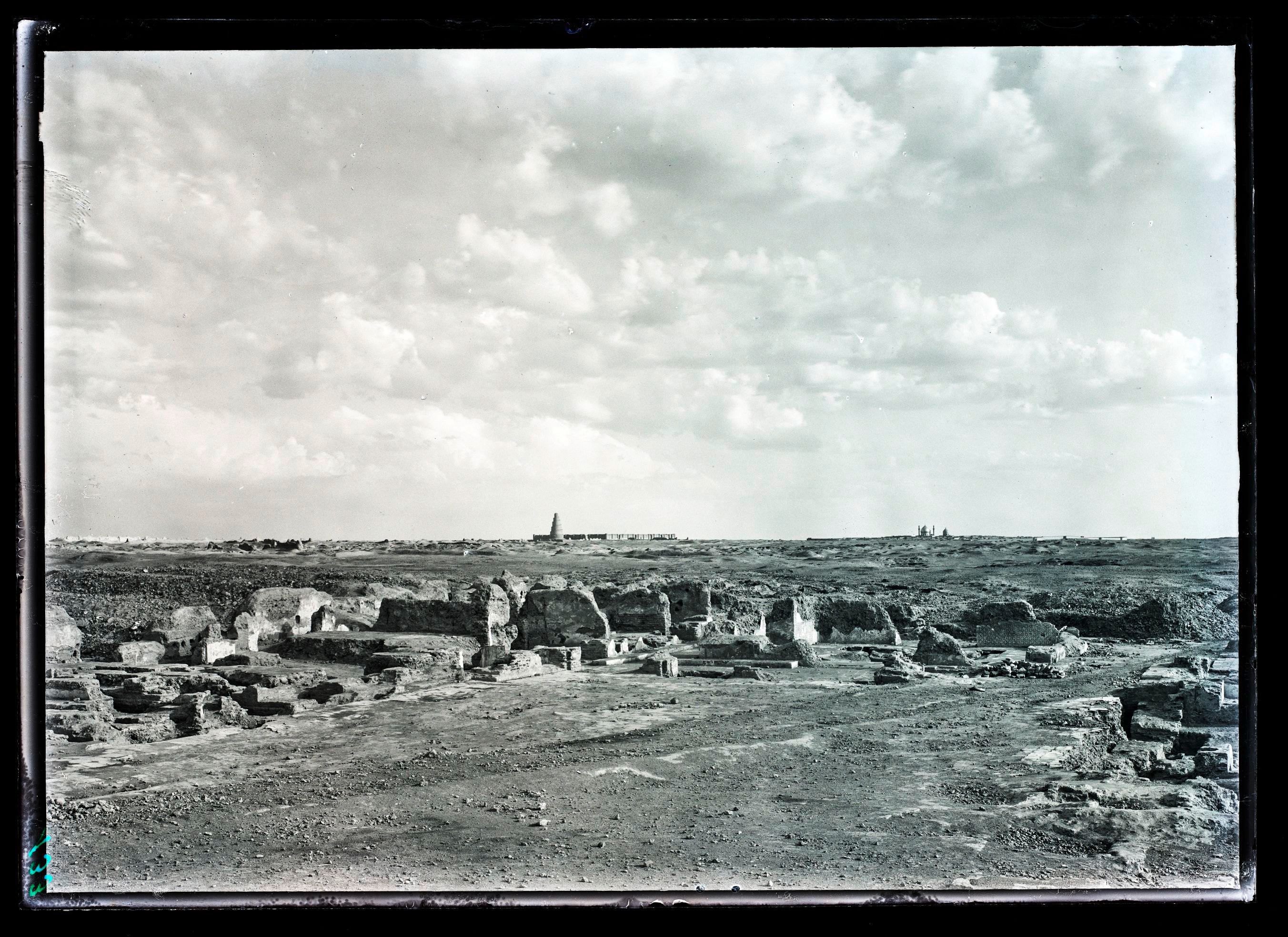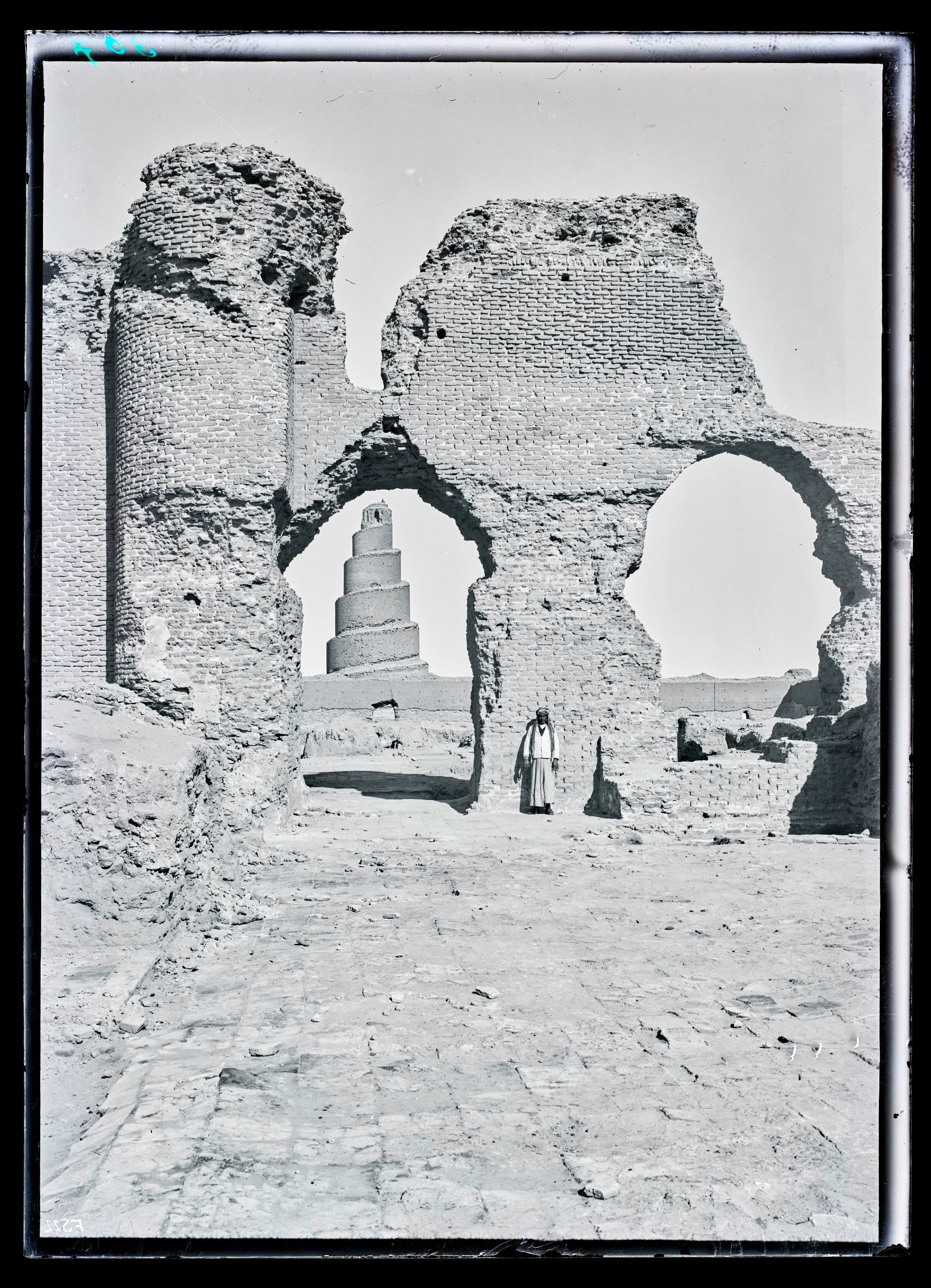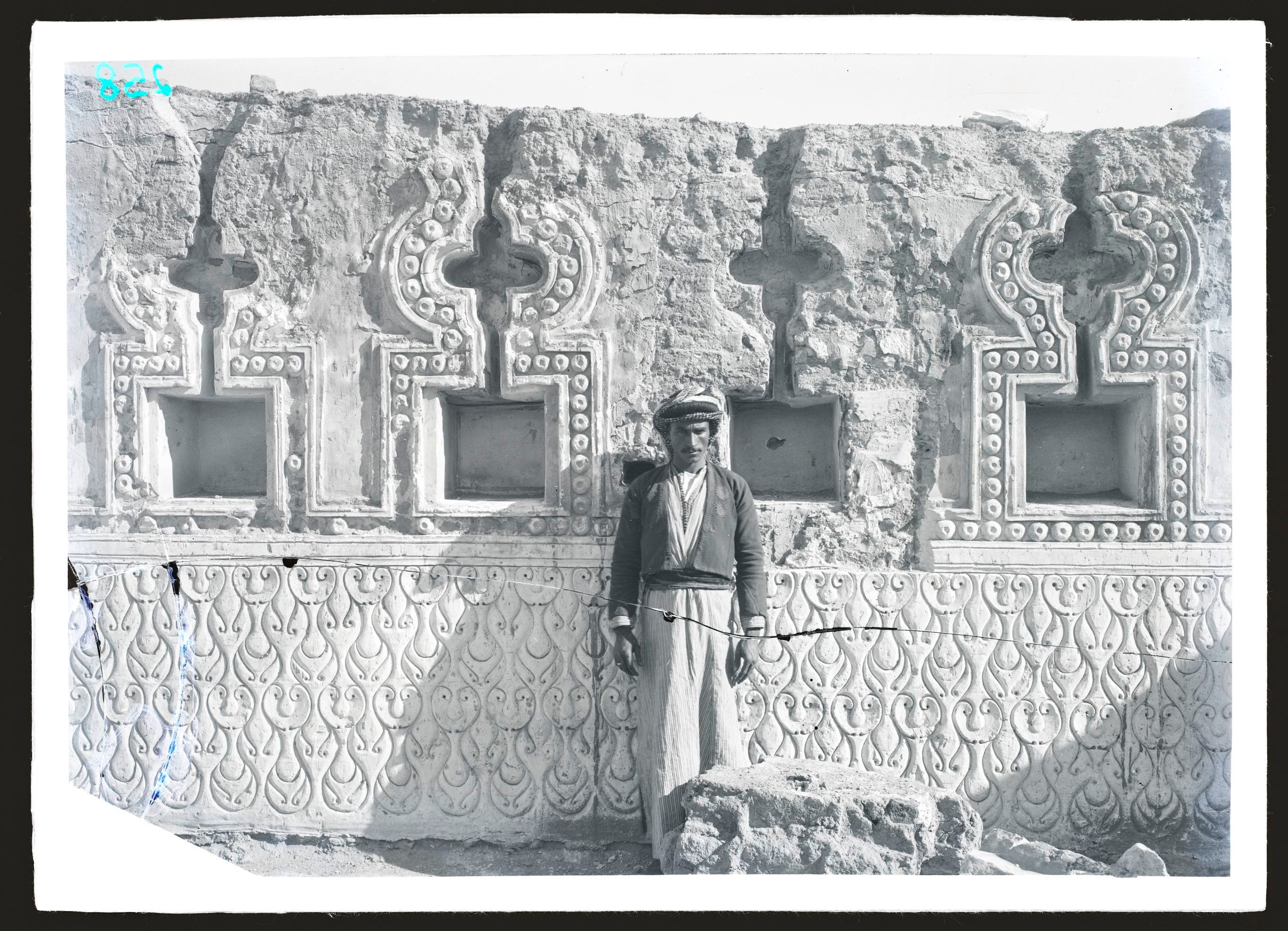Samarra Revisited
Over the past year, the Museum of Islamic Art has digitalised the glass and plastic negatives and diapositives from the two excavation campaigns by the museum in Samarra (today: Iraq) in 1911-13.
In the Samarra Revisited exhibition, all of the 1500 or so preserved photographs have now been made accessible for the first time. Even the museum employees themselves were not fully aware of the portfolio.
This led to the idea of asking current and former employees to take a closer look into the digital reproductions. 24 participants chose five photographs from Samarra which touched on their areas of work. You can find each of their "favourite photos" with comments as a digital print in the exhibition. All the other digital reproductions chosen, and the reasons for their choice, are available in the media station.
This selection shows the wide spectrum of possible uses for excavation photographs: they help archaeologists and provenance researchers to locate sites - RESEARCH. They show that excavation photographers also endeavoured in the past to enable a comparison of their photographs with the originals - COMPARE. As the photographed site situations become lost forever as a result of the excavation work, the significance of photography must not be underestimated! However, the photos also act as links to current social discourses - QUESTIONING. They delight and inspire - JOY. Finally, the photos shown here document a formidable site of Islamic archaeology with a charm and appeal that has not been lost today - LOCATE.
MARTINA MÜLLER-WIENER, ARCHAEOLOGIST, DEPUTY DIRECTOR OF THE MUSEUM FOR ISLAMIC ART
"I looked for a picture of the river. The significance of the Tigris as a transport route for Samarra for goods and people, as well as leisure tours, comes to life in the sources. I find it fascinating. It was just the same in Herzfeld's day."
THE RIVER
"I looked for pictures that had something to do with the river. The significance of the Tigris as a transport route for Samarra for goods and people, as well as leisure tours, comes to life in the sources. I find it fascinating. It was just the same in Herzfeld's day. Even the wall paintings depict the fauna of the river."
JULIA GONNELLA, ART HISTORIAN, DIRECTOR OF THE MUSEUM OF ISLAMIC ART IN DOHA
"This picture shows residents of Samarra in front of the city walls and the Askar sanctuaries, which are considered to be one of the most important Shiite pilgrimage sites. Attacks destroyed domes and minarets in 2006 and 2007. They were restored and are now accessible again."
LAND AND PEOPLE
"As well as the excavation, Herzfeld also captured Samarra's architecture, the landscape as well as the daily excavation work, which is of great appeal to visitors today. The photos are also a testament to a long-lost age."
LAURA HINRICHSEN, VOLUNTEER
"From this perspective, you can almost imagine Samarra as being intact: the streets, houses and squares, filled with a vibrant hustle and bustle. The extent of it makes you realise what a challenge it was - and still is - to keep track of."
KEEPING TRACK OF AND EDITING EXCAVATION DOCUMENTATION
"What I am currently occupied with regarding the excavation of Samarra is keeping track of it. On one hand, there was the task of keeping track of Samarra on site, where Sarre, Herzfeld and their team found themselves: sometimes harsh, inaccessible terrain, the sheer size and complexity of the excavation site, the scope of excavation findings and the logistics for transporting them, communicating with the local authorities. On the other hand, I am now tasked with keeping track of the excavation documentation in the archive."
JENS KRÖGER, ART HISTORIAN
"Here you can see the excavation work in the foreground, and the Great Mosque on the horizon with the spiral minaret, as well as the modern city of Samarra. The picture gives us a little idea of the size of the metropolitan area in the Abbasid period."
A GLIMPSE OF SAMARRA AND THE 1911-1913 EXCAVATIONS
"A diary in Samarra in October 1970 showed me that the orientation points in the flat metropolitan area on the eastern side of the Tigris were the modern city of Samarra with its Shiite Great Mosque and the nearby Great Mosque of the historic city, with its fortress-like enclosure wall and the spiral-shaped minaret, the Malwiya Tower. On the orders of the Caliph, the spiral minaret was to stand on the highest level of Samarra, so that it could be seen within the radius of a day's journey."
NIKOLA AEHLE, GRAPHIC DESIGNER
"The brickwork, with holes smashed through it, is a frame that provides a focus, drawing your eye to the minaret of Samarra in the distance...
Who really was the man you see in the picture? The hidden subject draws me into the scene as a viewer."
ATMOSPHERE!
"Streaks of colour, desert sand, portraits and photographs of details are interspersed with scenes of work and distant perspectives. Written notes add a personal touch. This choice, for me, is an attempt to capture the atmosphere of the excavation back then."
STORY ABOUT THE SPECIAL EXHIBITION "SAMARRA REVISITED"
Samarra Revisited
What actually happens behind the scenes in the museum? The special exhibition "Samarra Revisited - New Perspectives on the Excavation Photographs from the Palaces of the Caliph" opens a very personal insight of the employees into the museum work.
